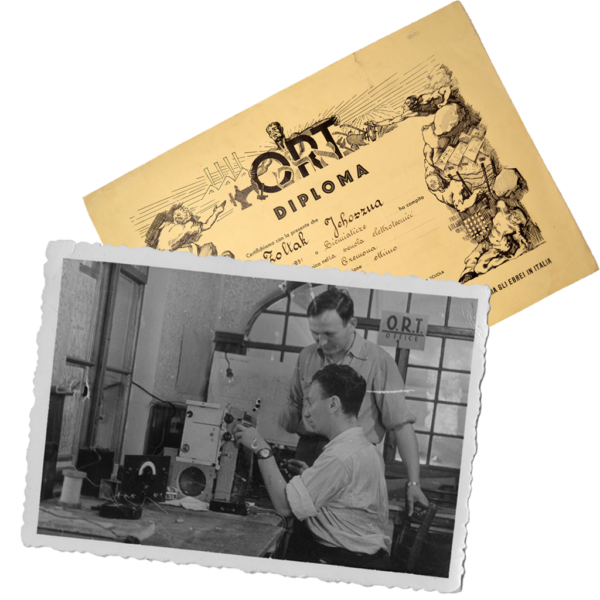
book 4
New Beginnings
“Suddenly a huge cry went up. When I looked over to the top of that little embankment, I saw some dirty, sweating American soldiers — the most beautiful human beings imaginable...they found us and heard our screams and our cries of ‘Oh God, we are free! We are going to be human beings again!’” Leslie Meisels
What happened to surviving Jewish youth after the war was over and they were free? By the time the war ended in 1945, many of their family members and friends had been killed. Some had lost everyone they knew. Many had no homes to go back to. They had spent years simply trying to stay alive and they had missed out on all the things young people usually do, like going to school. Their childhoods were gone and they needed to mourn. But they also needed opportunities to learn new skills, become part of society again and move on with their lives.
For many Jewish youth throughout Europe in cities, towns and displaced persons camps, school was back in session. Educators saw the need for schools that could help young people heal and start over. Those who immigrated to Canada to start new lives encountered different kinds of challenges in restarting their education. Whatever their educational path, Jews who had survived the Holocaust as children and teenagers often viewed going back to school as a meaningful part of a new beginning.
Let’s follow the different educational journeys of some survivors in the years after the war.
Photo Credit
Top:
ORT diploma written in Italian on March 12, 1948. It was presented to Jehoszua (Sidney) Zoltak for his completion of an electrician course in the Cremona displaced persons camp in Italy. Montreal Holocaust Museum, Montreal.
Bottom:
Johnny Jablon studying electronics in the ORT school near the Bindermichl DP camp. Linz, Austria, 1947. Azrieli Foundation, courtesy of Johnny Jablon.



